I'm trying to configure an STM32L011-Nucleo developement board to consume about 600 uA of current or so. It uses an STM32L011K4.
The datasheet states that this should be possible if I drive the MCU at 8 MHz and keep it in sleep mode for most of the time.
So I expect that MCU should consume about 1.3 mA or so in run mode. My exact case isn't listed - there are examples for 16 MHz HSI and 8 MHz HSE. I think that 1.3 mA is a good estimation.
In sleep mode:
So it is the same story: looking at 16 MHz HSE and 8 MHz HSE I could expect less than than 500 uA of consumption with 8 MHz HSE in sleep.
To test the current I put 100 Ohm through-hole resistor on the power jumper like this:
After all I have the following picture:
As you can see I have 1.7 mA in sleep and 2.2 mA in run modes. Which is WAY more than I expected.
I've already set all unused GPIO's to GPIO_Analog mode as I expect that this will minimize leakage current.
I've checked the schematic to verify that VDD is only feeding the MCU (looks like this is true).
I tried much lower frequencies and I was able to drop current consumption to 400 uA at 625 kHz which is also not match to datasheet...
Well, I have to state that I'm confused. AVR controllers (ATmega48PA) behaved as expected in one of my previous device.
Is there anything I am missing?
My clock configuration:
UPDATE
After I changed the PLL setting to None I reached less consumption: 1.1 mA for sleep and 2 mA for run mode:
